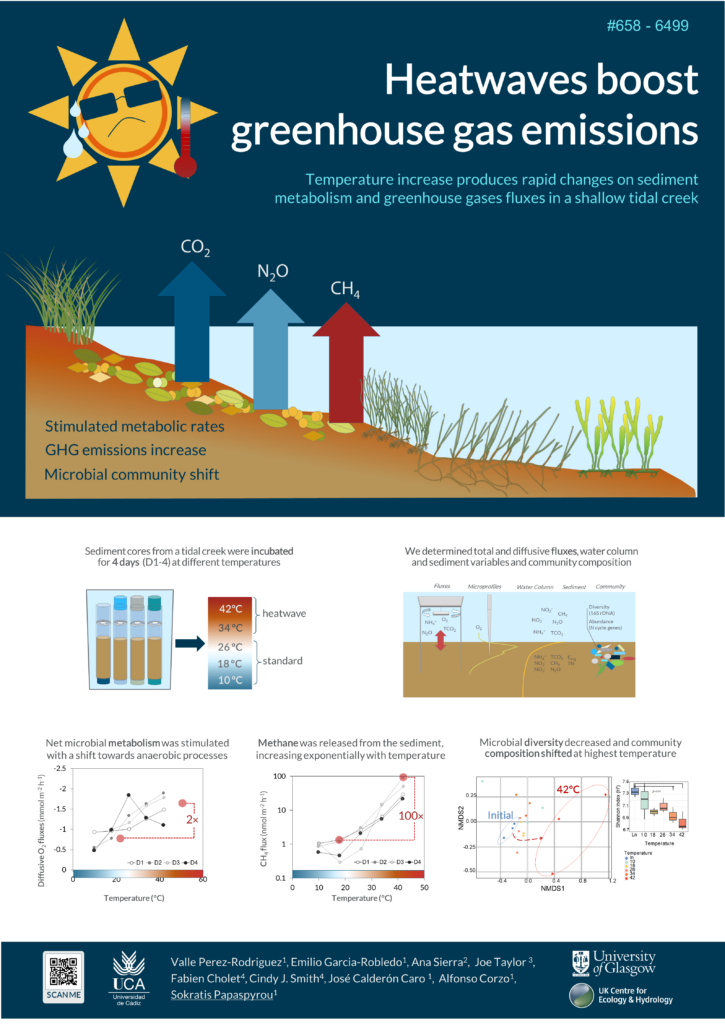Valle Perez-Rodriguez1, Emilio Garcia-Robledo1, Ana Sierra2, Joe Taylor 3, Fabien Cholet4, Cindy J. Smith4, José Calderón Caro 1, Alfonso Corzo1, Sokratis Papaspyrou1
- Department of Biology, Faculty of Marine and Environmental Science, University of Cadiz, Pol. Río San Pedro s/n, Puerto Real, Spain
- Department of Physical Chemistry, University of Cadiz, Pol. Río San Pedro s/n, Puerto Real, Spain
- UK Centre for Ecology & Hydrology, Maclean Building, Benson Lane, Crowmarsh Gifford, Wallingford, OX10 8BB, UK
- Infrastructure and Environment Research Division, School of Engineering, University of Glasgow, Glasgow, G12 8LT, UK.
ABSTRACT
Average temperature of the planet and the frequency of heat waves is increasing due climate change. Here we measured the effect of short-term temperature change on sediment metabolism and greenhouse fluxes in a shallow tidal creek. Sediment cores were exposed to a wide range of temperatures (10-42 °C) in the laboratory during 5 days. Sediment-water fluxes were measured daily. On the last day, sediment variables, bacterial community composition and nitrogen cycle gene abundance were also analysed. The temperature increase stimulated the overall net microbial metabolism in the sediments and release of CO2; with a shift towards anaerobic processes since O2; penetration depth decreased with temperature. The higher influx of ammonium with increasing temperatures suggests a stimulation of nitrification rates. N2O efflux was highest at 26 °C, decreasing at higher temperatures, similar to the pattern of the abundance of the denitrification genes in the sediment. N2O emissions were higher during the first days indicating an uncoupling of processes that enhanced net release from the sediment. Methane was released from the sediment, increasing exponentially with temperature. These changes were also reflected in the bacterial community composition. Therefore, heat waves can have a large short term impact on both the microbial community and emissions of greenhouse gases from shallow coastal environments.
KEYWORDS: Climate change · Greenhouse gases · Sediment water fluxes · Heat waves · Bacterial community




